People, Surf cultureWave Woman
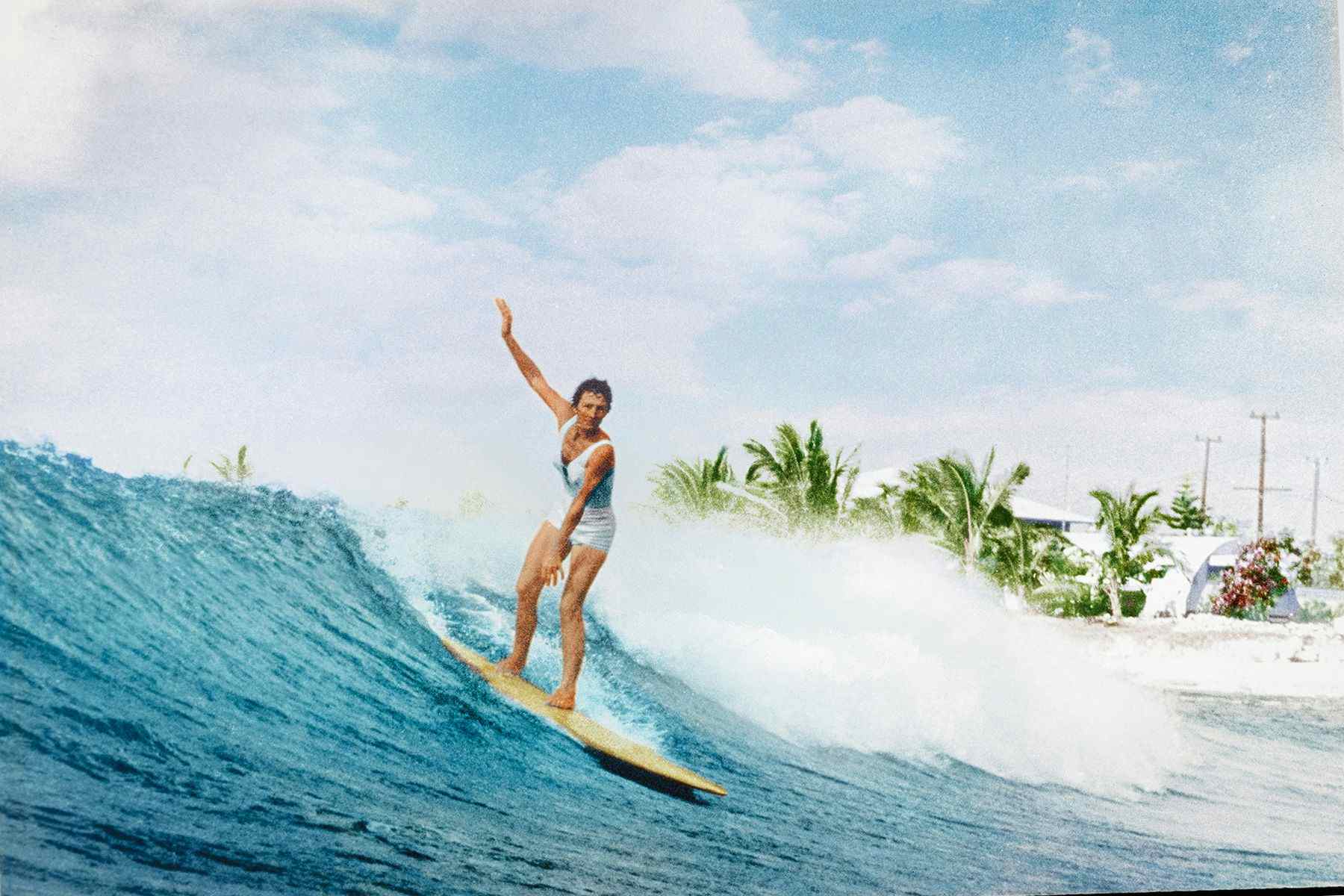
A Book About The Life & Struggles of A Surfing Pioneer
“Surfing is great fun
Riding speed of the water
Conquering one’s fear.”
The above Haiku was composed by one of surfing’s great female pioneers – Betty Pembroke Heldreich Winstedt. The words – simple, candid, concise – depict her personality to the T. Her personality – inquisitive, resolute, intrepid – underpinned her philosophy and fuelled a zest for life and surfing, taking her on a series of brine-infused adventures. And all of that – her personality, her philosophy, her zest for life and surfing, as well as her brine-infused adventures and her Haiku – has been chronicled in the book Wave Woman: The Life and Struggles of a Surfing Pioneer, written by none less than her daughter and partner-in-crime, Vicky Heldreich Durand.
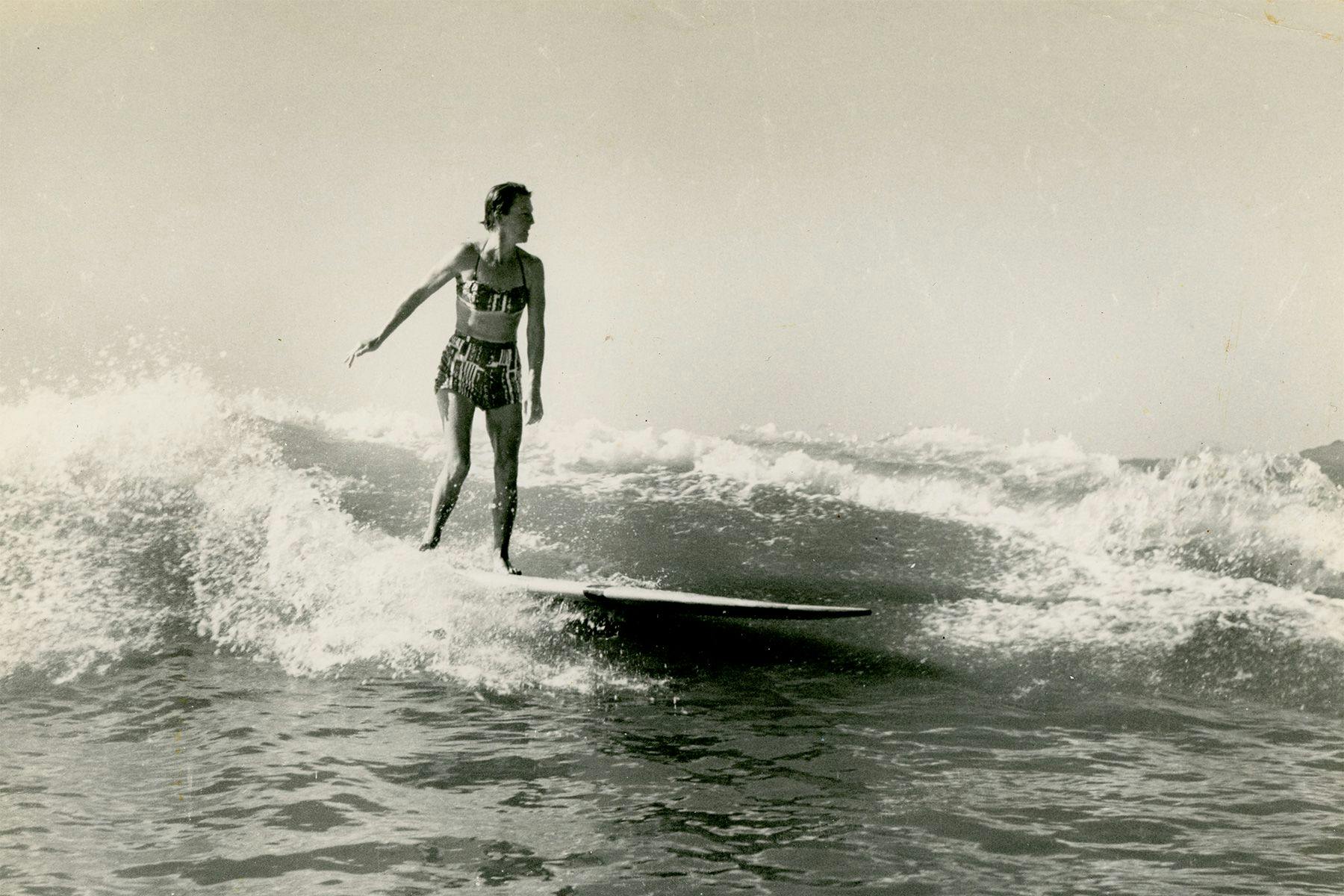
Born in 1913 in Utah, Betty was no ordinary woman. She broke glass ceilings in a time when the ceilings were higher and the glass tougher, driving her to not only try her luck as a pilot, a dental hygienist, a poet, a jeweller, and a potter, but also end a twenty-two year marriage and move to Hawaii’ with her two teenage daughters and, aged forty-one, take up surfing. Shortly afterwards she came second in the iconic Makaha International Surfing Championship and joined the first-ever Hawaiian surf team. “She was a ‘can do’ woman who believed she could do exactly what she wanted,” Vicky reminisces on the traits that helped her mother succeed in breaking the mould in a predominantly men’s world. “She was fearless and created her own reality; she was an adventurer who wanted to try anything exciting at least once. She had the utmost confidence in herself.”
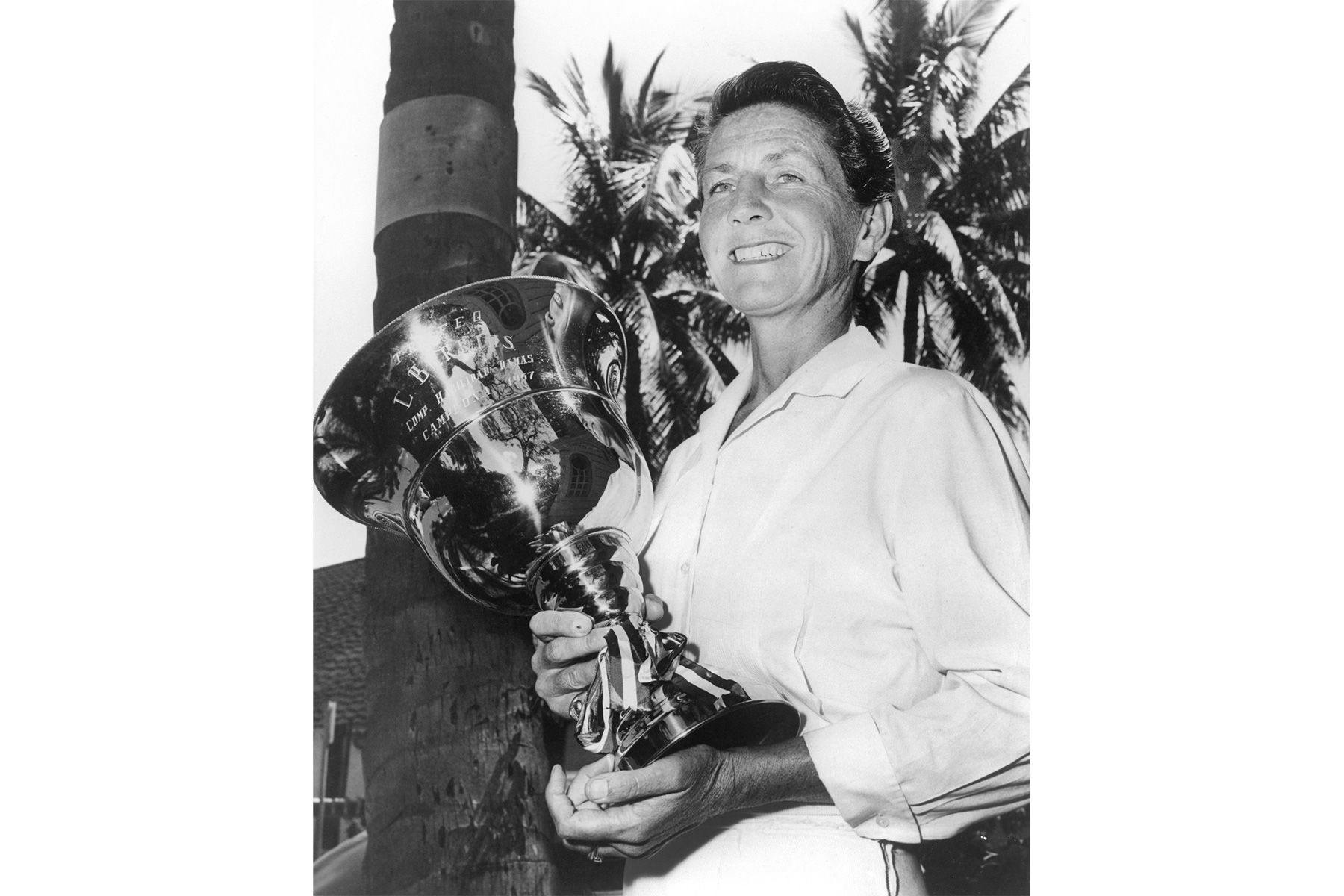
The book travels back in time to the halcyon days of surfing in Hawaii, letting the reader in on what it felt like to be walking a path that was, particularly for women, largely untrodden. It portrays the scents and sceneries of Oahu, the susurration of the island’s waves, the spirit of its growing surf community and vibrant culture. It describes in detail the joys and sacrifices it took for Betty to achieve what she did, and how surfing came to be a catalyst for adventure, for a healthy lifestyle, for following her intuition and respecting nature. Wave Woman is also sprinkled with examples of how, through surfing, Vicky and Betty’s mother-daughter bond tightened. “Surfing gave us access to mutual surfer friends and a camaraderie. It gave us a sport we could live, breathe, and experience together, which enhanced a very positive relationship.”
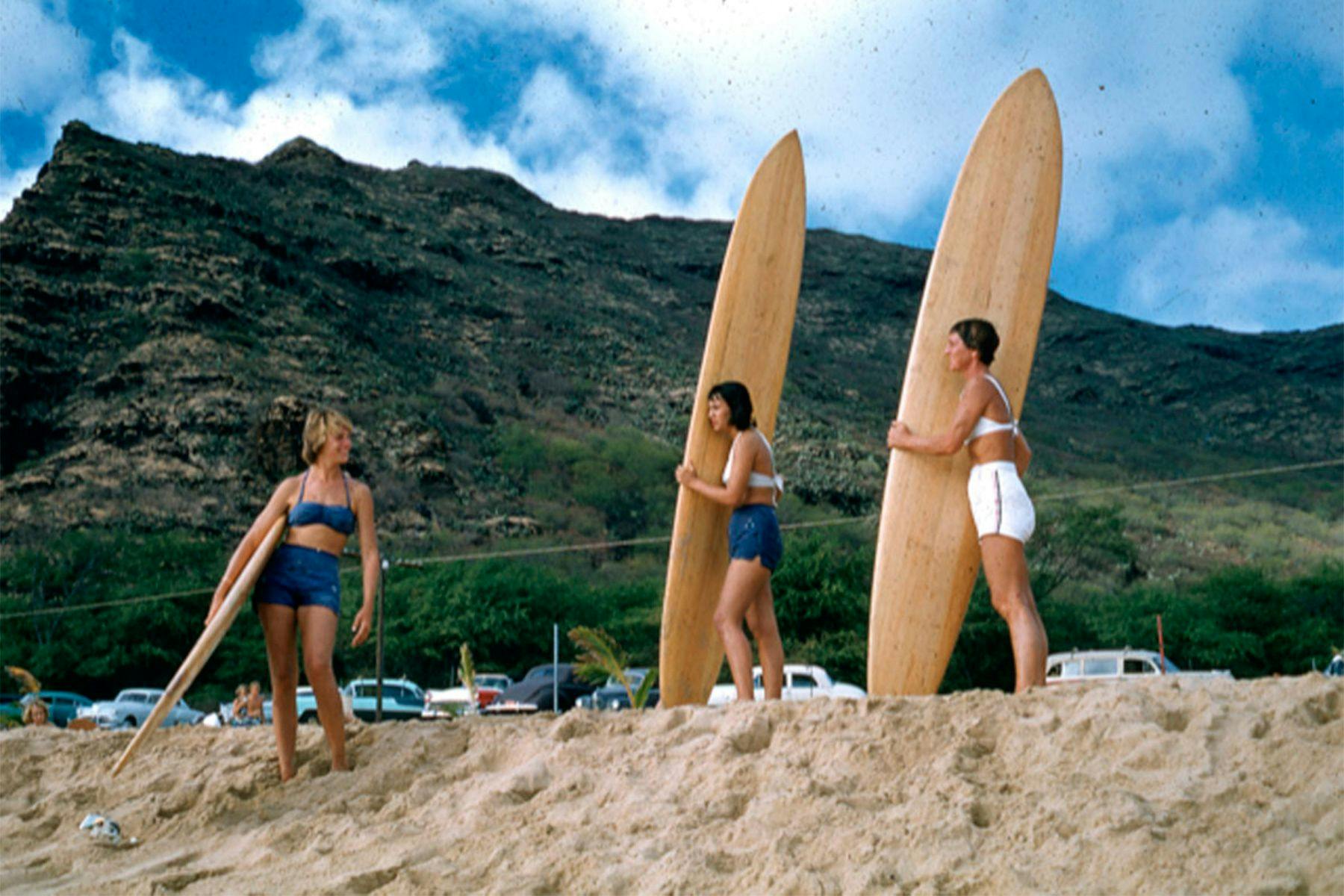
Writing a book, regardless of the subject, is always a process of [self]reflection and [self]discovery. For Vicky, one of the most surprising discoveries was finding “the poems and writings she kept in her collection of memorabilia,” and reading in her mother’s journals that “she never thought about marriage and claimed she would never marry. As for reflection, the writing process provided plenty of insights, enough for her to describe this as an “ah-ha time.”
“The whole process was out of my comfort zone,” says Vicky. “But I went there, and have been able to experience that fear is a choice, and to get anywhere one must step out of their comfort zone.” Ironically, this interpretation seems almost like a test, a reminder of what both her mother and surfing have taught her. As Vicky herself puts it, “Much of surfing is about a can-do attitude, claiming your wave and going for it. You cannot sit on the sidelines and expect progress. Surfing teaches a wiliness to get out of one’s comfort level to rise to a new level.”

Many authors, when asked the cliche question “What is your favourite part of the book”, would find it hard to point it out. For Vicky, however, it was the Westside Story chapter. “Those were amazingly wonderful years to surf,” she says. “We were very lucky to have surfed during the last of surfing’s ‘Golden Years.’”
The following is an excerpt from Chapter 7 – Westside Story (1956), published with permission of the author.

In 1956, my mother decided to take Jimmy Wong up on his offer. Our family, plus Gloria’s Honolulu friend Mele Kukea (Ethel and Joe’s daughter and friend), drove west thirty-six miles from Honolulu out along the leeward side of Oahu to visit Jimmy and his wife, Emily. The drive took us past the plantation towns of Aiea, Waipahu, and ‘Ewa. At that time, sugarcane fields stretched from one town to the next. After a rightward bend in the two-lane Farrington Highway, just past ‘Ewa and the Campbell estate, all of a sudden there stretched before us a series of round hills, or volcanic tuf cones, that jutted out into the cobalt sea. We continued along the rugged seashore, past the sleepy towns of Nanakuli, Maili, and Wai‘anae. Gray-green mountains rose to the right, punctuated by spacious, mile-wide valleys. We passed bountiful farms, wooden shacks, and Quonset huts, all surrounded by gardens with swaying coconut palms and plumeria trees flowering in pinks, yellows, and whites. We witnessed country living at its best; pigs, chickens, horses, and dogs lived largely un-penned in yards and fields.
After an hour’s drive, we arrived at Makaha Beach. The Hawaiian word “makaha” means “fierce, savage, ferocious.” Legend has it that a group of Hawaiian bandits once lived in the area, robbing travellers and generally pillaging. This storied area lies at the foot of a great green valley carved like an amphitheatre into the backside of the spectacular and most sacred spot on the coast, Mount Ka‘ala. At 4,040 feet, the mountain is at the head of the M?kaha and Wai‘anae valleys, the highest peak on Oahu, and celebrated in many a traditional song. Its craggy volcanic summit sits starkly against an impressive backdrop, an azure sky with phantom-like clouds.
Makaha was originally home to native Hawaiians who farmed, fished, and later traded with schooner ships anchoring in the bay. The M?kaha stream gave life to the lush valley, which is also home to the Kane‘aki Heiau, a lava-rock temple. The heiau, which the Bishop Museum restored in the 1960s, is said to be the best-preserved temple on Oahu. Built in the 1600s, it is dedicated to Lono, the god of agriculture and fertility. A large stone there, Pohaku o K?ne (Stone of K?ne) is named in honor of another major god, regarded still as the guardian of the heiau. Kamehameha the Great is said to have worshipped here, and the site was in use as a war heiau until his death in 1819.
After overzealous traders wiped out the native sandalwood crop, M?kaha Valley became home to sugar and coffee plantations. In 1898, a single-gauge railroad was put in to link the Wai‘anae Coast with Honolulu and also to transport sugar in the other direction, around Ka‘ena Point, to the processing mill in Kahuku. In 1946, the sugar plantations of Makaha and Wai‘anae closed because of a lack of water. In 1947, the M?kaha ahupua‘a (a pie-shaped area of land running from the top of the mountain to the ocean) sold for $1,250,000 to Chin Ho, whom Time magazine called Hawaii’s Chinese Rockefeller. Chin Ho sold off the prime beachfront property in order to develop projects in the valley.
But Makaha was still mostly untouched in 1956. M?kaha Valley levelled out at the Pacific coastline, and just below a craggy mountain softened by grasses lay a half-mile crescent of clean- swept, white-sand beach—the most beautiful strip Betty had ever laid eyes on. The water was clear and clean, with multiple hues of turquoise and teal. Fish abounded. The water temperature averaged seventy-four degrees. The air was dry and sunny in the daytime and balmy at night.
We found the Wongs’ address on Farrington Highway and turned into the driveway. The Wongs were quite a couple. Jimmy, in addition to being a police detective and regular surfer, was a musician and singer. Emily was an accomplished hula dancer and a hostess at the Willows Restaurant in Honolulu, famous for its sprawling grounds, koi fish ponds, shrimp curry, and coconut pie. Their three children included James Ka‘upena Wong, soon to become one of Hawaii’s premier chanters.
After a brief welcome greeting, Jimmy and Emily gave us a tour of their Lindal Cedar house, proudly showing off each little bedroom. Keeping with Hawaiian-style hospitality, they invited us to have something to eat. Jimmy motioned us over to their dining room table while Emily surprised us by pulling out a coconut pie from her refrigerator. We devoured it over our afternoon conversation.
After we finished eating, Jimmy stood up from the table, smiled, and said, “Come, Betty.” The diminutive police detective walked out the door, onto his front lawn. My mother followed, and we followed her. Jimmy walked to the beach and a few steps along the sand, to an overgrown weed-and-sunflower-covered beach lot, one with the same ocean view as Jimmy and Emily’s. He pointed to a small For Sale sign posted on the ocean side of the property.
Gloria came running up from the beach, where she was playing with Mele Kukea. Both of the curious girls followed us up the gradual bank of sand. My mother walked up to the sign on the property and stood for a moment, looking around. Since her childhood trip to Santa Monica, she had dreamed of living near the ocean. She turned around and looked at Mount Ka‘ala and the steep surrounding mountains. Then she took another look at the white-sand beach in front and the surfable waves breaking of Kepuhi Point. Betty paused for a moment and then leaned over and yanked the For Sale sign out of the ground. She shook the loose, sandy dirt of the stake, held the sign over her head, and said, “This has to be mine.”
She remembered the advice Dad Center’s realtor wife, Lily, had given her in response to the abundance of land for lease in Honolulu: “If you ever come across a piece of fee-simple property on the beach, if at all possible, buy it.”
Back in Waikiki, first thing Monday morning, Betty and Ron contacted Mr. Fitzjohn, the property owner, and met with him to make a deposit. Betty and Ron paid $13,000 for the thirteen-thousand-squarefoot lot. (Later, Betty was able to buy some additional footage on the street side, increasing the lot size to sixteen thousand square feet.)
Betty could barely wait to get back to Makaha and surf the waves. She called Ethel Kukea and Clarence Maki to tell them about Makaha— the surf she had discovered and the property she had just bought. They decided to drive out on the following weekend. During the 1950s, there were no hotels or places to rent for the night, so everyone planned to camp on the beach.
Saturday morning, my father said he had work to do and would stay home. Making jewellery was my father’s joy and a bit of an obsession. Besides swimming, his main recreation was smoking cigars and reading Kipling. Gloria, too, was a bookworm, but she enjoyed the beach. By this time she was a twelve-year-old, more chubby than athletic. I was a tall, gangly sixteen-year-old and somewhat hesitant about leaving Waikiki surf for the unknown, but game. My mother, now forty-three, was in prime physical shape. We packed up our beach clothes; loaded our surfboards, some food, and minimal camping equipment into the Caddy; and set of for a Makaha that would soon be ours.
When we arrived at the public beach, no one else was out on the sand or in the water and not a single car was parked. We had the place to ourselves. We parked on the side of the road so we could easily unload supplies. Our friends pulled their cars in next to ours. Anne and George Lamont arrived fist. Ethel and Joe Kukea brought their three children, and Clarence Maki brought his wife, Edna, and their son.
We measured the waves by the face, in comparison with the height and stance of a person riding the wave. The waves were around four feet high and perfect for the adult surfers. Gloria and I lay on the beach and enjoyed the sun, taking an occasional swim to cool off. The younger Kukea kids swam and played in the shore break, splashing and catching little waves.
In the late afternoon, we all gathered driftwood scattered along the beach, and Betty made a fire. She was the designated cook for the teriyaki beefsteaks. Everybody had brought something to contribute: snacks, rice, salad, vegetables, and cookies. We had a feast on the sand.
After dinner, we stoked the bonfire and made s’mores, talking and listening to the sounds of the ocean in the background. The warmth of the fire on our bodies balanced the coolness of the night air. After a day in the sun and water, we tired early. Mother, Gloria, and I curled up in our blankets next to one another near the fire while the rest of the group adjourned to their makeshift tents. As we fell asleep, we watched a spectacular light show of shooting stars.
The first signs of dawn and the sound of breaking waves woke us up. Betty stoked the fire and began preparations for breakfast. Later, she cooked bacon and eggs that we ate with bear claws from the Alexander Young Bakery. After breakfast, we cleaned up and got ready for another day.
“Vicky,” my mother said, filling her greenish-blue eyes on mine, “we need to go surfing.
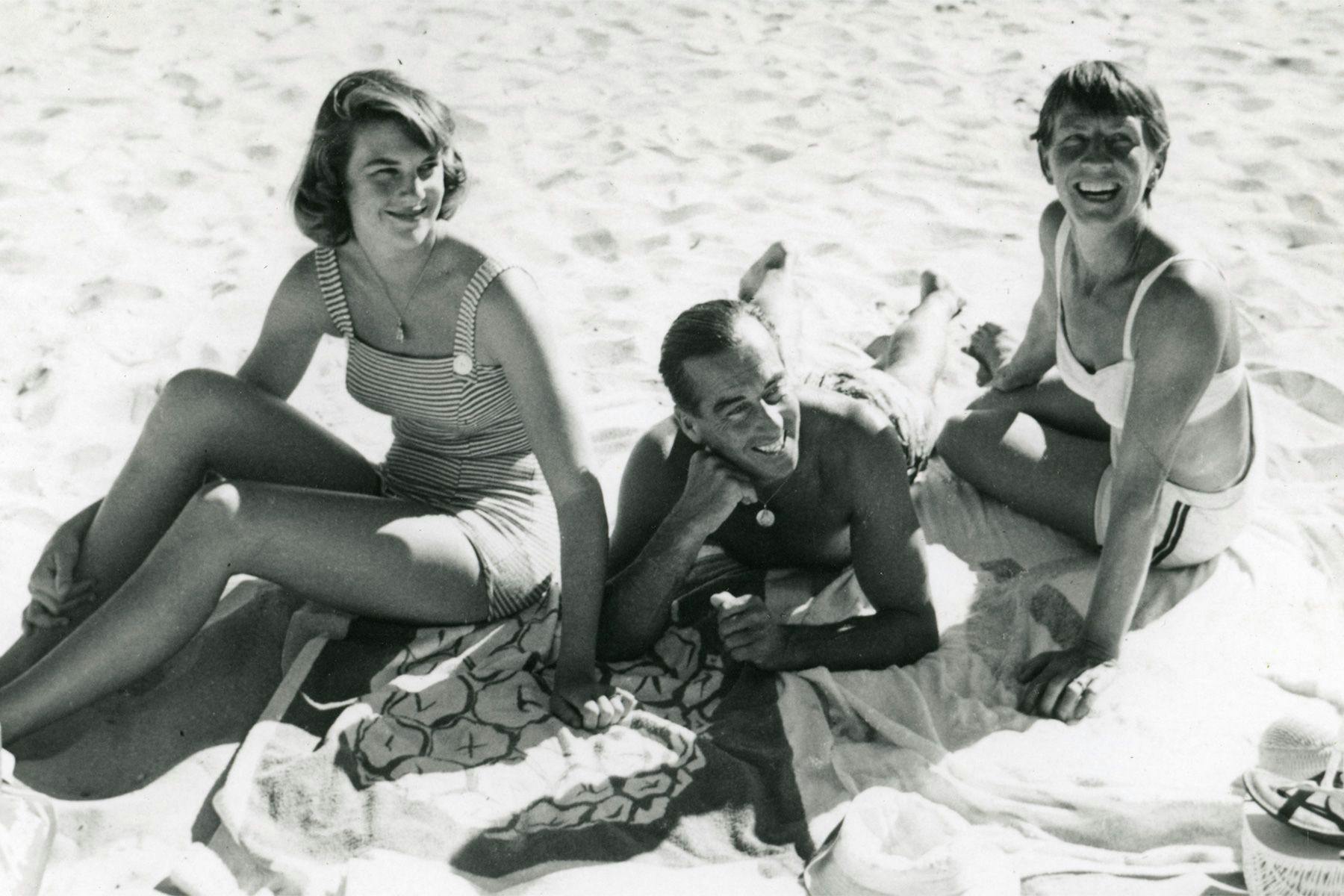
Big Waves
In the beginning, Makaha seemed like a terrifying place to surf. It was a right slide, where the wave breaks from left to right, and suited our stance. Mother and I were both regular-footed surfers: We faced the wave, rather than keeping our backs to it, as a goofy-footed surfer would do (right foot forward and left foot back). We were now in new, treacherous territory, though, as the waves were thicker, stronger, larger, more powerful, and more challenging than those at Waikiki. At first, their force and size frightened me. On that first morning, I spent a lot of time paddling back and forth between the farthest outer edge of the lineup and the channel. Sitting too far away from a place to catch a wave, I paddled endlessly for mounds of water that were impossible to catch. Sitting in the channel, looking sideways at the curling waves, was intimidating, for they looked much bigger than a straight-on view. I was petrified but trying to overcome my fear. My mother kept motioning me to where she was sitting, saying, “Come over here, where you can catch a wave.” Finally, after much prodding, I got up enough courage to paddle over into the lineup, where the waves formed near an underwater coral head. Finally I caught my first wave. That was it for me—I was over the hurdle.
During the next three years, my mother, Gloria, and I went out to Makaha as much as possible, camping on our beach lot as soon as escrow closed. Besides the weeds on the property, there was a leftover World War II military refrigerator box that measured about ten by sixteen feet. We called it our icehouse and stored our stuff there: a barbecue, cooking equipment, dishes, towels, surfboards, and anything we needed for camping. If it rained or if there were too many mosquitoes buzzing around, we slept in the icehouse.
Kehau Kea came out occasionally and surfed with us. Five foot eight, with shoulder-length brown hair and brown eyes, she was a classmate from school, a surfing and paddling friend from Waikiki, and one of only a few native Hawaiian female surfers. She had surfed at Waikiki for only three years but was strong from paddling canoes. She had a lively sense of humor, and we liked surfing with her. (In 1958, she was queen of the sixth annual Makaha International Surfing Contest.)
Other women surfers of the time included Keala Stibbard, Anona Naone, Del Wong, Jane Kaopuiki, Joan Kalahiki, Mozelle Angel, Christie Daniels, and Marge Philips, although most women were not regulars at Makaha—they came out only for contests. But there was a growing group of male surfers who would come to Makaha and sleep in their vans or in cars with the backseat removed to make a bed. No one wanted to miss the glassy early-morning surf conditions. Several were young, bright, newly hired teachers just out of college from school who became friends. Peter Cole came out alone in his woody. A Stanford graduate and Math teacher, Peter was, at six foot two, an athletic big wave surfer. He was friendly, wise, and gracious. Fred Van Dyke was shorter yet muscular, with a quirky personality and a fascination with health and fitness. He taught science and was an early environmentalist; years later, when he commuted to work by car from Sunset Beach, he wore a gas mask. Fred was just starting to date his future wife, Dee, an art teacher. After surfing, we often made a bonfire on the beach, drank beer, and had a lot of laughs.
My mother and I concentrated on learning to surf Makaha. Gloria was happy to sit on the beach or swim. My father was less enchanted with the place and made the trip only occasionally. We three were fine without him and his grumbling. This was also my mother’s time away, a chance to do her own thing. She was coming to love the sport more than she loved her life with him.
Our first surfboards were made of balsa wood, stretched ten feet long, and weighed about forty pounds. But as we improved our surfing skills, and as changes in materials made surfboards lighter, faster, stronger, and more manoeuvrable, we wanted better options. We upgraded to models from Hobie Alter, Pat Curren, and Renny Yater. The cost of these surfboards was steadily escalating, but we were usually able to sell an old one for enough money to justify buying a new one. Not that we were frivolous about casting off old boards, especially if we liked them. If the balsa-wood beauties got dinged from the rocks or gashed by other boards, Betty fixed them. She would sand the ding, put new fiberglass over the hole, and cover the patch using epoxy and resin. She did this as proficiently as she carved figurines.
This was a time before leashes, so wiping out on a wave meant the board usually washed a quarter of a mile (or more) to the shore. Often, local children would grab the boards before we caught up with them and catch little waves in the shore break. In 1957, one of those kids was Rell Sunn, then seven years old. Betty befriended the girl, who clearly had a feeling for surfing. Years after, Rell said that before she could read books, she could read the ocean, the tides, and the wind.
This was also a time before buoys and broadcast predictions about swell size and surf conditions. The only way to know about the waves was to drive out to “the country” or telephone Dok and Marie Klausmeyer, the first people on Makaha Beach with a telephone. (A surf spot in front of their house is named in their honor.)
Most waves defied the simple statistics on a surf report. Each had a personality and a character of its own. We thrived on the challenge of figuring out how the textures and depth of the ocean bottom would affect the swells. We had to learn the language of waves, and where to sit by lining up a house on the point with a coconut tree onshore. Besides the long right slides, Makaha had a tricky backwash. The backwash formed a short-lived but rideable counter-directional wave produced by a wave’s whitewater hitting the shore and retreating into the next incoming wave. My mother and I learned to ride these waves together.
“To describe a wave analytically, to translate its every movement into words, one would have to invent a new vocabulary and perhaps also a new grammar and a new syntax, or else employ a system of notation like a musical score or algebraic formulas with derivatives and integers.”
— Italo Calvino
Soon my mother and I were surfing regularly with a new group and beginning to feel part of something larger than we were. New friends—Peter Cole, Fred Van Dyke, George Downing, and Johnny McMahon—gave us tips. All the men were generous with their knowledge. We sought their advice, and our abilities improved.
In 1956, we were part of the beginning of surfing’s resurgence. Although it is referred to as the sport of kings, surfing was for everyone in ancient Hawaii—kings, commoners, women, and children. Disputes were settled and bets were placed on surfing competitions. Hawaiians put aside work during a four-month period between October and January known as the Makahiki, when celebrations included lots of surfing, in addition to music, hula, and large feasts. But such festivities waned as Westerners arrived, and especially after 1820, when New England missionaries began exerting their influence on Hawaiian culture. By 1850, surfing had become a rare sight around the islands.
One hundred years later, fewer than two thousand surfers were reported on the island of Oahu—some of them native Hawaiians, some of them kama‘aina (residents whose families had been in Hawaii several generations), and some of them newcomers like us. Surfing spots were not crowded; there were plenty of waves for all to catch, and it was a friendly sport.
***
The author would like to thank Vicky Durand for her assistance with the article.